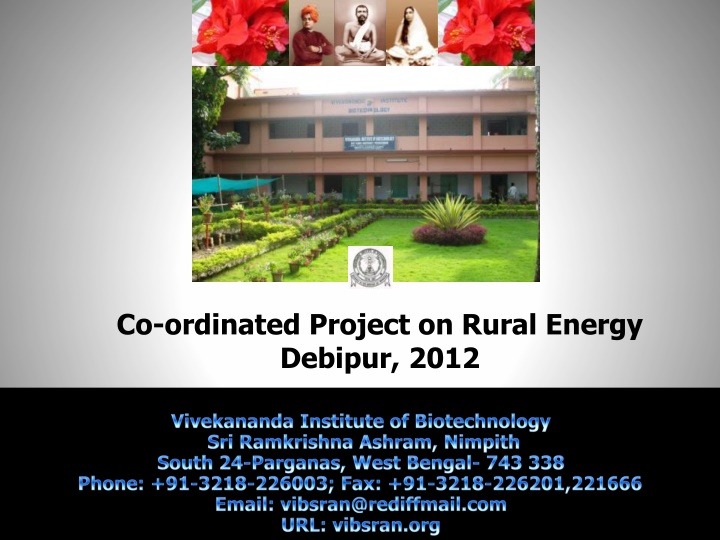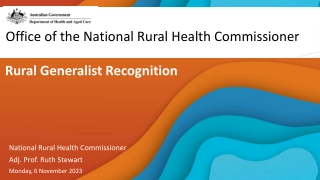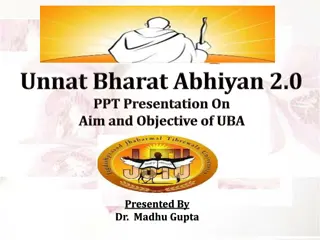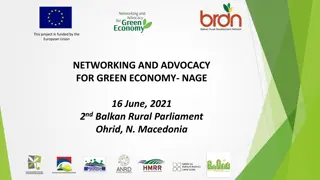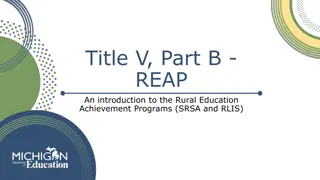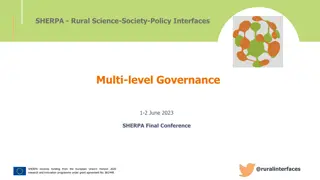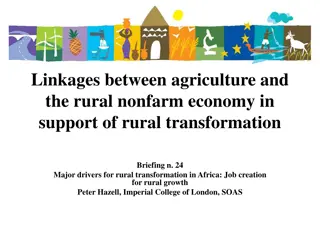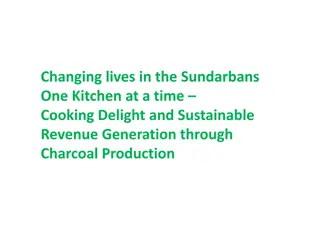Co-ordinated Project on Rural Energy Development in Sundarbans
This project aims to develop innovative energy solutions for households and commercial activities in the Sundarbans coastal zone of India. Objectives include increasing energy efficiency, replacing diesel/kerosene with sustainable options, and empowering entrepreneurs to provide energy services. The project involves setting up an energy service center, implementing solar-powered LED lighting systems, gasifiers, and bio-gas units, with community participation and training programs for sustainability.
Download Presentation

Please find below an Image/Link to download the presentation.
The content on the website is provided AS IS for your information and personal use only. It may not be sold, licensed, or shared on other websites without obtaining consent from the author.If you encounter any issues during the download, it is possible that the publisher has removed the file from their server.
You are allowed to download the files provided on this website for personal or commercial use, subject to the condition that they are used lawfully. All files are the property of their respective owners.
The content on the website is provided AS IS for your information and personal use only. It may not be sold, licensed, or shared on other websites without obtaining consent from the author.
E N D
Presentation Transcript
Co-ordinated Project on Rural Energy Debipur, 2012
To make an effort to develop a model for energy service for the people of Sundarbans - Coastal zone of India
APPROVED PROJECT OBJECTIVES To develop a model to increase the energy efficiency of households in an innovative way To replace diesel/kerosene use in different commercial activities of the target area To provide the energy service through an entrepreneur
BASE LINE DATA Local Energy Problems Proposed Technology Solutions An energy service centre run by an entrepreneur. Electricity - a dream because of geographical disadvantage Home lightning system would include the solar based power involving the LED fittings. Kerosene source of home light Commercial energy source diesel powered generator Commercial power requirement is to be met through single fuel(wood) based Gasifier. Community participation in the program through sharing of capital cost and paying a service provider i.e., the entrepreneur. Bio Gas at individual household level for cooking purpose
ACTION PLAN & METHODOLOGY Action Plan Methodology 1. Village selection and acquiring land for plant room and site office/ service station. Organizing the village level discussion etc. programs with panchayets, school primary/secondary data. teachers, consulting 2. Selection of beneficiaries. Conducting survey/workshop with villagers / panchayats, documenting the energy requirement of the house hold / commercial agencies, finally depending on the eagerness of the beneficiaries. 3. Selection of service providers. Organizing workshop with the unemployed village youths (educated) involving panchayats . 4. Selection of the models and evaluation of performance of home lighting systems and gasifier. 5. Training for repairing, maintenance and operation of home lighting system and gasifier. Workshop at NB Institute of Renewable Technology (NBIRT) for the technical finalization. I. One week training for institute staff and same for the entrepreneurs. Operation and maintenance of gasifier and other training taken. II.
OBJECTIVES & ACHIEVMENTS Approved objectives Achievements To develop a model to increase the energy efficiency of a house hold. 60 Sets of LED based home lighting system comprising of 5 watts LED fitting (2) Solar panel of 37 Wp Charge controller 40Ah battery have been installed Procurement of a 10KW proposed gasifier Construction work of gasifier shed Installation of gasifier is completed (under the guidance of Sri. S.P. Gonchoudhary) Transmission and distribution work is in progress (Innovation : treated bamboo poles for distribution) To replace diesel/kerosene used in different commercial activities in the target area( particularly generator) To provide the energy service through a entrepreneur. Two entrepreneurs have been selected and one is working To provide Bio gas plant 12 bio-gas units were installed in the village
DELIVERABLES Technology package Solar based LED system Gas based power system Bio-gas based home cooking system Societal Aspect Involvement of the entrepreneur Formation of groups (JLG) Involvement of Villagers More than 1000 of villagers have shown interest in this project. Presently four panchayats are involved in this project. The entrepreneur is selected, to whom the work will be handed over after the completion of project. Linkages with Institutions NBIRT.
PROJECT BENEFITS Over 1000 of people and 6 organizations are motivated and mobilized for replication of project achievements Replacement of diesel/kerosene(saving the environment) Cost saving Unique home lighting system Saving from snake/insect bites/fire or such hazards Two micro-enterprises Many bio-gas based units done in the village (through a parallel initiative) reducing use of kerosene/LPG/fire wood and also producing excellent bio-fertiliser
Bio-gas Initiative A parallel programme to the CP- Rural has seen construction and usage of bio-gas in many households at Debipur. Cow dung is poured into the chamber leaving it to rot and give off bio gas which is then passed onto nearby kitchen through rubber pipeline. Piyush Kirtania from Purba Debipur with his bio-gas unit
Bio-gas Initiativecontd. From a bio gas plant, a family with four cattle or 25 kg of cow/cattle dung can have at least 2 hours of biogas supply (using one standard oven) twice daily. This makes a total of four hours every day for cooking, quite sufficient for a five to six people family. A gap of approximately six hours is needed to gather bio-gas inside the chamber and that is in keeping with the normal cooking schedule of any household (morning and evening).
Bio-gas Initiative.contd. With an initial cost of around Rs. 12000 for the construction of chambers and almost no recurring cost, this is an ideal solution for the rural families with domestic cattle. This is green energy with no harm to the environment, low cost and easy to maintain. In addition, the bio-gas slurry extract can be applied as bio-fertilizer or in making of vermi- compost.
To advance a nation or a community in addition to propping up its weakest and most helpless members, one should also lift up the best and the most gifted, so as to make them of the greatest service to the country." Jamsetji Tata
